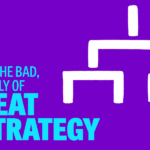The days of command-and-control leadership are well and truly behind us. In 2025, the most successful teams aren’t just hitting targets – they’re thriving because their leaders have mastered something far more nuanced: creating environments where people genuinely want to do their best work.
It’s not about being the loudest voice in the room or having all the answers. Today’s high-performing teams are built on three fundamental pillars:
- Culture – the environment you create
- Clarity – the direction you provide
- Connection – the relationships you nurture
Think of it as your leadership blueprint – a practical framework that transforms good intentions into measurable results.
Why These 3 Pillars Matter
Here’s the thing: teams don’t just magically gel together. The most resilient, innovative and productive teams have leaders who understand that culture, clarity, and connection aren’t nice-to-haves – they’re the engine that drives everything else.
The numbers tell a compelling story. Research from the Harvard Business Review shows that employees who feel a strong sense of belonging are 3.5 times more likely to contribute their fullest potential. Meanwhile, research shared in Forbes reveals that high-trust teams experience:
- 76% higher engagement levels
- 50% lower turnover rates
- 40% less burnout
- 12% increase in overall productivity
But here’s what makes this particularly relevant now: hybrid and distributed teams require leaders to be far more intentional about creating these conditions. You can’t rely on osmosis or water cooler conversations to build culture anymore.
Culture – The Foundation of High Performance
Let’s start with culture, because it’s the soil in which everything else grows. Culture isn’t your mission statement on the wall or your company values in the handbook. It’s what happens when no one’s watching – the behaviours that get rewarded, the stories that get told, and the way people treat each other on a Tuesday afternoon.
Strong team culture is characterised by consistent values in action, inclusive practices that make everyone feel valued, regular recognition that celebrates both effort and achievement, and shared rituals that create belonging. It’s about creating psychological safety where people feel comfortable taking calculated risks, speaking up with ideas, and admitting when they need help.
Culture in Action
One of our clients, a fast-growing tech company, was struggling with silos between departments. Their leadership team started hosting monthly ‘failure parties’ where teams shared what didn’t work and what they learned. Within six months, cross-department collaboration increased by 40%, and innovation metrics soared. The key? They made vulnerability a competitive advantage.
The beauty of strong culture is that it becomes self-reinforcing. When people feel genuinely valued and aligned with purpose, they naturally hold themselves and each other to higher standards. But it requires consistent attention. Culture isn’t built in a day, and it can be damaged quickly if leaders aren’t mindful.
Our team performance frameworks help organisations identify where their culture is strong and where it needs attention, creating actionable roadmaps for improvement.
Clarity – The Leadership Lever
If culture is the foundation, clarity is the compass. Think about your team right now. If you asked each member to write down your top three priorities for the quarter, would they all give the same answer? If you asked them to describe what success looks like, would their responses align? If not, you’ve got a clarity challenge.
Effective clarity operates at multiple levels
Strategic clarity means everyone understands not just what they’re doing, but why it matters and how their work contributes to the bigger picture.
Operational clarity involves clear expectations about roles, responsibilities and decision-making authority.
Communication clarity ensures messages are consistent, timely, and accessible across all team members.
Here’s a practical approach to building clarity:
- Start with purpose: Regularly connect daily tasks to broader organisational goals.
- Be specific about expectations: Vague direction leads to inconsistent results.
- Create feedback loops: Regular check-ins prevent small misunderstandings from becoming big problems.
- Document decisions: In hybrid teams especially, written clarity prevents ‘he said, she said’ confusion.
- Test understanding: Don’t assume people understand – ask them to reflect back what they’ve heard
In hybrid and remote settings, the margin for error with clarity shrinks significantly. Without casual corridor conversations to fill gaps, leaders need to be much more deliberate about ensuring everyone’s on the same page.
Our people development strategies include specific tools for building clarity at every organisational level, from board-level strategy right down to individual development plans.
Connection – What Makes Teams Stick
Culture provides the foundation, clarity provides direction, but connection is what makes people actually want to stay and give their best effort. Research reveals that a leader’s ability to build connection, foster trust, and promote positive relationships within a team is a powerful driver of communication, trust in management, and participation in decision-making.
Real connection goes deeper than being friendly or having good interpersonal skills. It’s about creating genuine trust, establishing psychological safety where people can be authentic, fostering a sense of belonging where everyone feels they have a voice, and building resilience through mutual support.
In practical terms, this means:
Daily trust-building: Consistency in small actions builds bigger confidence over time. Do what you say you’ll do, admit when you don’t know something, and show genuine interest in people as whole humans, not just job functions.
Regular meaningful feedback: Not just annual reviews, but ongoing conversations about development, recognition of specific contributions, and honest discussions about challenges and growth opportunities.
Intentional relationship-building: Especially crucial for hybrid teams, this might include virtual coffee sessions, team rituals that create shared experiences, cross-functional projects that build understanding, and celebration of both professional and personal milestones.
Balancing technology and human touchpoints: Use technology to enable connection, not replace it. Video calls for important conversations, collaborative tools that make remote work seamless, but also protected time for unstructured interaction and relationship-building.
The goal isn’t to be everyone’s best friend – it’s to create an environment where people feel genuinely supported, valued, and connected to something bigger than themselves.
Our management and leadership programmes help leaders develop these connection skills through practical tools and real-world application.
The Leadership Blueprint – Putting It Into Practice
So how do you actually implement this? Here’s your practical checklist for building culture, clarity, and connection:
Audit your current state:
- Survey your team on culture, clarity, and connection levels.
- Identify specific gaps and opportunities.
- Prioritise the biggest impact areas first.
Be consistently visible:
- Regular one-to-ones with direct reports.
- Team meetings that balance business updates with relationship building.
- ‘Skip level’ conversations with broader team members.
Clarify purpose and expectations:
- Regularly communicate how individual roles connect to organisational success.
- Set clear, measurable objectives with defined success criteria.
- Create decision-making frameworks that reduce ambiguity.
Embed feedback loops:
- Weekly check-ins, not just monthly reviews.
- 360-degree feedback processes that include peer and upward input.
- Regular ‘lessons learned’ sessions that normalise continuous improvement.
Celebrate wins and learn from setbacks:
- Recognition that’s specific, timely, and meaningful.
- Post-project reviews that focus on learning, not blame.
- Shared celebrations that bring the whole team together.
Remember, this isn’t about perfection – it’s about consistent progress. The leaders who get this right aren’t necessarily the most charismatic or the most technically skilled. They’re the ones who understand that sustainable high performance comes from creating environments where people can do their best work.
Frequently Asked Questions (FAQs)
Why do culture, clarity, and connection matter more now than ever in team leadership?
The shift to hybrid and distributed work has fundamentally changed how teams operate. Without physical proximity, leaders can’t rely on informal interactions to build relationships or ensure everyone’s aligned. Culture, clarity, and connection have become the intentional practices that replace what used to happen naturally in traditional office environments.
How can leaders assess the strength of their team culture?
Look beyond engagement surveys to behavioural indicators: How do people interact when they think no one’s watching? Do they help each other succeed? Are they comfortable challenging ideas constructively? Do they celebrate each other’s wins? Regular pulse surveys, stay/exit interviews, and 360-degree feedback can provide quantitative data, but the qualitative observations often tell you more.
How do you maintain connection in hybrid teams?
It requires much more intentionality than traditional co-located teams. This means scheduled informal time (not just business meetings), rotating in-person gatherings when possible, digital tools that facilitate collaboration and social interaction, regular one-to-one video calls, and team rituals that create shared experiences even when physically apart.
Ready to strengthen your team’s culture, clarity, and connection?
The most successful leaders in 2025 will be those who intentionally build great team dynamics using proven frameworks and practical tools.
LTT’s approach combines evidence-based strategies with real-world application, helping you build teams that don’t just deliver results, but genuinely thrive. Whether you’re looking to transform your organisational culture, clarify your leadership approach, or build deeper connections across your team, we’re here to help you put these principles into practice.
To discover how culture, clarity, and connection can transform your team’s performance, contact us here and request your leadership blueprint audit today.



